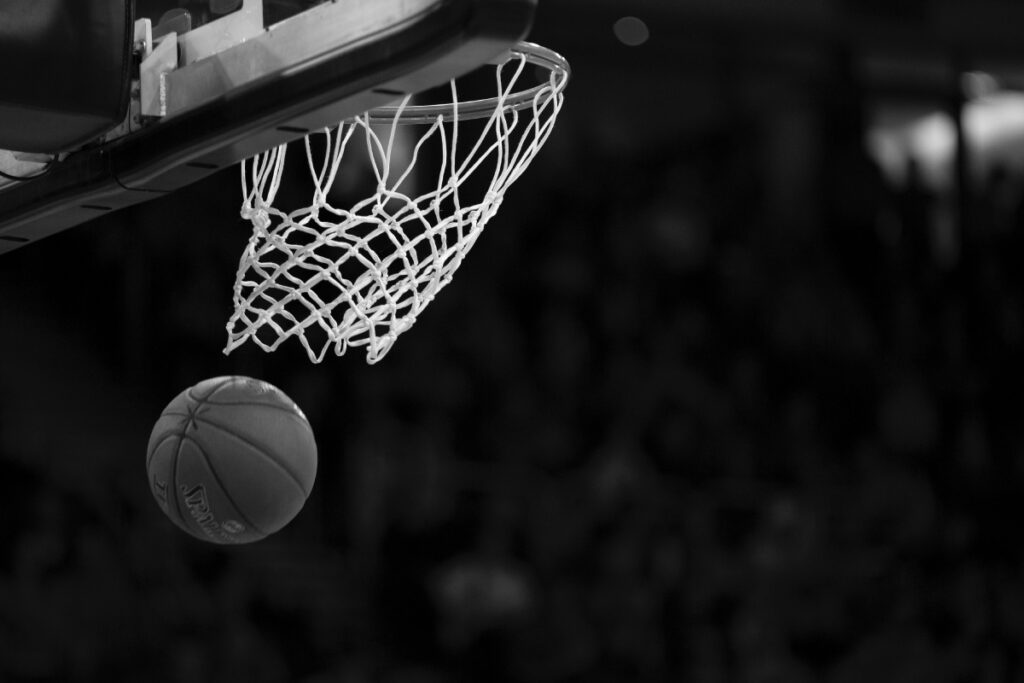The optimized brain of Michael Jordan
- Prof. Dr. Fabian Steinberg
- Sports

“I’ve missed more than 9,000 shots in my career. I’ve lost almost 300 games. Twenty-six times, I’ve been trusted to take the game-winning shot and missed. I’ve failed over and over and over again in my life. And that is why I succeed.”
- Michael Jordan
“The Shot” [1]: 05/07/1989. NBA playoffs, Chicago Bulls vs. Cleveland Cavaliers. With three seconds left to play, Michael Jordan has the chance to decide the series for Chicago with just one shot. He is pressed by two players, receives the ball, changes direction, jumps up, and adjusts his shot perfectly during the jump. The epitome of the optimized brain of perhaps the best basketball player of all time.
If you frequently observe such flexible and targeted professional basketball players’ movements, you might sometimes catch yourself asking: How does the brain manage to adapt such incredibly fast movements so dynamically to the game? While the answer is simple, the underlying process is highly complex: Neuroscience has found out that some regions of the brain differ between basketball players and non-players. These differences are based on continuous intensive training, which has induced neuroplastic processes [2] over many years. These processes cause changes in brain activity and structure. For example, it has been observed that the striatum (located in the center of the brain) is more pronounced in professional players compared to non-athletes [3]. The striatum is a brain region responsible for motor processes, motor learning, and action planning. The research demonstrated that structural changes in the brain accompany years of training. In short: In order to play at the top, your brain must have undergone structural adjustments through many years of training.
The brain of a professional basketball player works more efficiently.
It is also assumed that a basketball player’s brain works more efficiently than the brain of non-athletes. In a brain scanner (MRI) study, it was found that some areas of the basketball player’s brain are less active in perceptual and cognitive tasks, despite still performing at their best [4]. Fewer resources and therefore less energy is used to perform such tasks. The brain works more efficiently, which frees up resources for other tasks that are urgently needed in such a highly dynamic and complex sport.
Professional basketball players have a more pronounced "mirror neuron system".
Besides the factors mentioned above, professional basketball players also have a higher anticipation capacity. It is assumed that this happens through a more pronounced “mirror neuron system”. The neurons in the mirror neuron system are always active when other persons’ movements are to be perceived, recognized, and correctly processed. Basketball players, for example, are much better at anticipating whether the basket will be scored or not based on the movement of other players [5]. This is, of course, extremely relevant for rebounds, steals, and subsequent transition plays. A high level of expertise can thus only be developed when processes of perception and action in the brain are optimally coordinated over many years of training.
But even if you have built your brain’s structural foundation and your brain is working efficiently, it doesn’t mean that you can call upon your top performance every single training session and game. Why? Because you are a human being, you have good and bad days, and you cannot permanently be in an optimal brain state. For example, your free throw quality can suffer if you are too tense, distracted, or emotional. This is where we at neuro11 come in. Through our neuro11 brain training, we train your optimal brain state directly on the court. If you would like to know more about it, please contact us via info@neuro11.de.
Our advice: Next time you watch a basketball game live or on TV, try to focus on how well and quickly some players can anticipate where the ball is going. This becomes very clear when you pause the live stream during a critical free throw and rewind five seconds to watch the anticipation. You can do this several times and will quickly see that professional basketball players orientate themselves correctly towards the ball early on, even though it is not clear for the untrained eye whether the free throw will go in or not.
#trainyourbrain
If this article sparked your interest and you would like to know more about this or other topics, please do not hesitate to contact us via info@neuro11.de. We look forward to hearing from you.




